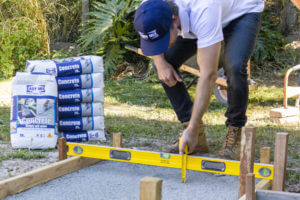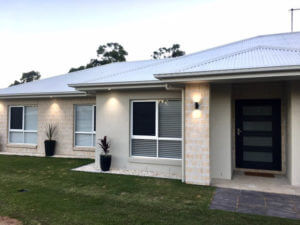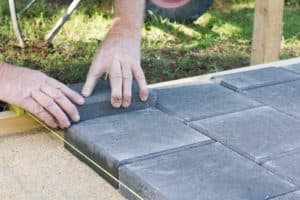Gravel is more than just a drainage option.
Landscaping gravel is a versatile material that is a smart and eco-friendly choice for a variety of applications. It can be used for drainage and structural support in driveways, pipe bedding, and water management. Plus, is also great for decorative functions such as pathways and garden mulch, enhancing the look and feel of your garden.
Have a read of the different ways you can use gravel within your backyard landscape.
Walkways and paths
Gravel can be a great option for walkways and paths in your yard, it offers quick drainage and is easy to maintain. Pathways can be curved into any shape or filled with a combination of gravel sizes for a more dramatic effect.
Some gravels can roll underfoot more than others, however, proper installation and final choice in gravel can help to reduce the amount of roll.
Patios
Drainage gravel can be used as a floor in outdoor seating areas and patios, providing a visually appealing surface with texture. The gravel becomes a permeable surface, allowing rainwater to drain through the stones.
Water features
When mixed with stones, drainage gravel is a useful medium for filling the bottom of ponds, lining dry stream beds, and recirculating fountains. As water splashes on the gravel, it changes the colour appearance of the stones and can make nearby foliage and gardens stand out to create a lush and vibrant look.
Mulch for garden beds
Although gravel is considered more common in succulent gardens, it is beneficial for traditional plants too. Using gravel in the place of mulch can bring life to your garden, making the plants and trees pop in contrast.
Drainage gravel also provides garden beds with much-needed drainage so the water flows through and doesn’t collect at the roots. Plus, it can help to suppress weeds and prevent water loss through evaporation. When distributing gravel on the bed it is best to only have a small layer to not compact the soil.
Driveways
A cost-effective and beautiful solution for driveways is to lay gravel. Rainwater can flow through the stones, keeping your driveway from becoming flooded. Unlike asphalt or concrete which can crack overtime from exposure to the elements, gravel is relatively unaffected and is easy to maintain.
It is important to properly install a gravel driveway on a firm compacted foundation to ensure a solid surface which will support the weight of cars.
Drainage solutions
The obvious way to use drainage gravel in your backyard is to drain water away from a structure. It can assist with easy access around pipes in the ground or behind retaining walls, while directing excess water to flow through without interruption.
Gravel trenches can help direct and drain water; rain gardens use gravel to prevent runoff and drain water on-site. If there is an expanse of impermeable landscape, drainage gravel can help by breaking up the land for easier flow through.
Fire pits
If you are worried about stray sparks from your fire pit, gravel can act as a safe surface for those stray sparks, while also being a neat and tidy flooring option.
Erosion control
By placing drainage gravel on slopes, hilly garden beds and walkways, you can help to prevent soil erosion as the water runs downhill. The more angular the edges of the gravel, the better it will be at catching particles of soil from being washed down the slope and keeping them in place on the hillside.
If soil erosion is a big problem for your property, drainage gravel is only a partial solution that will need to work with other erosion-prevention measures for a holistic solution.
You can find Easy Mix’s Drainage Gravel in your local hardware store or Bunnings Warehouse.




